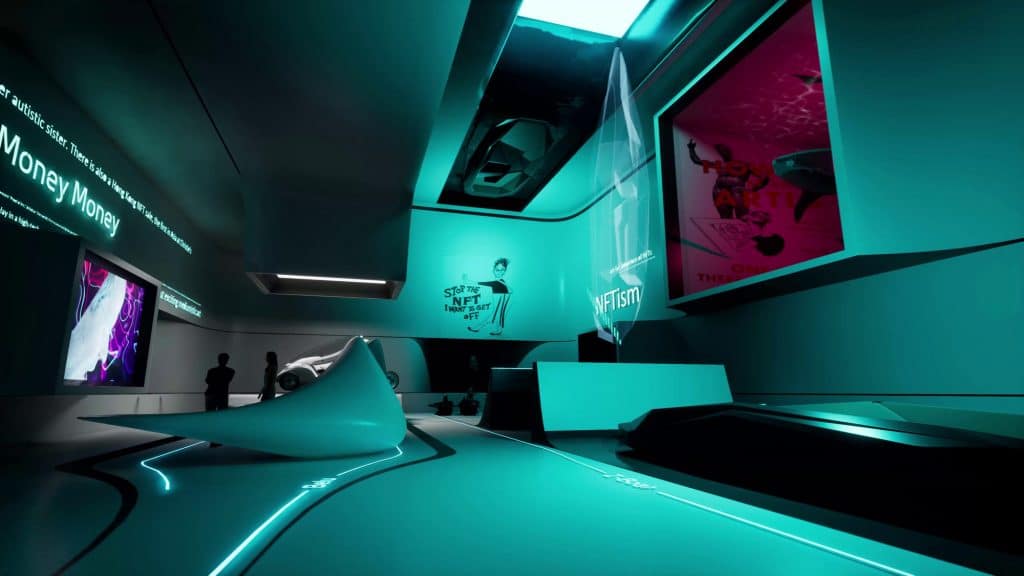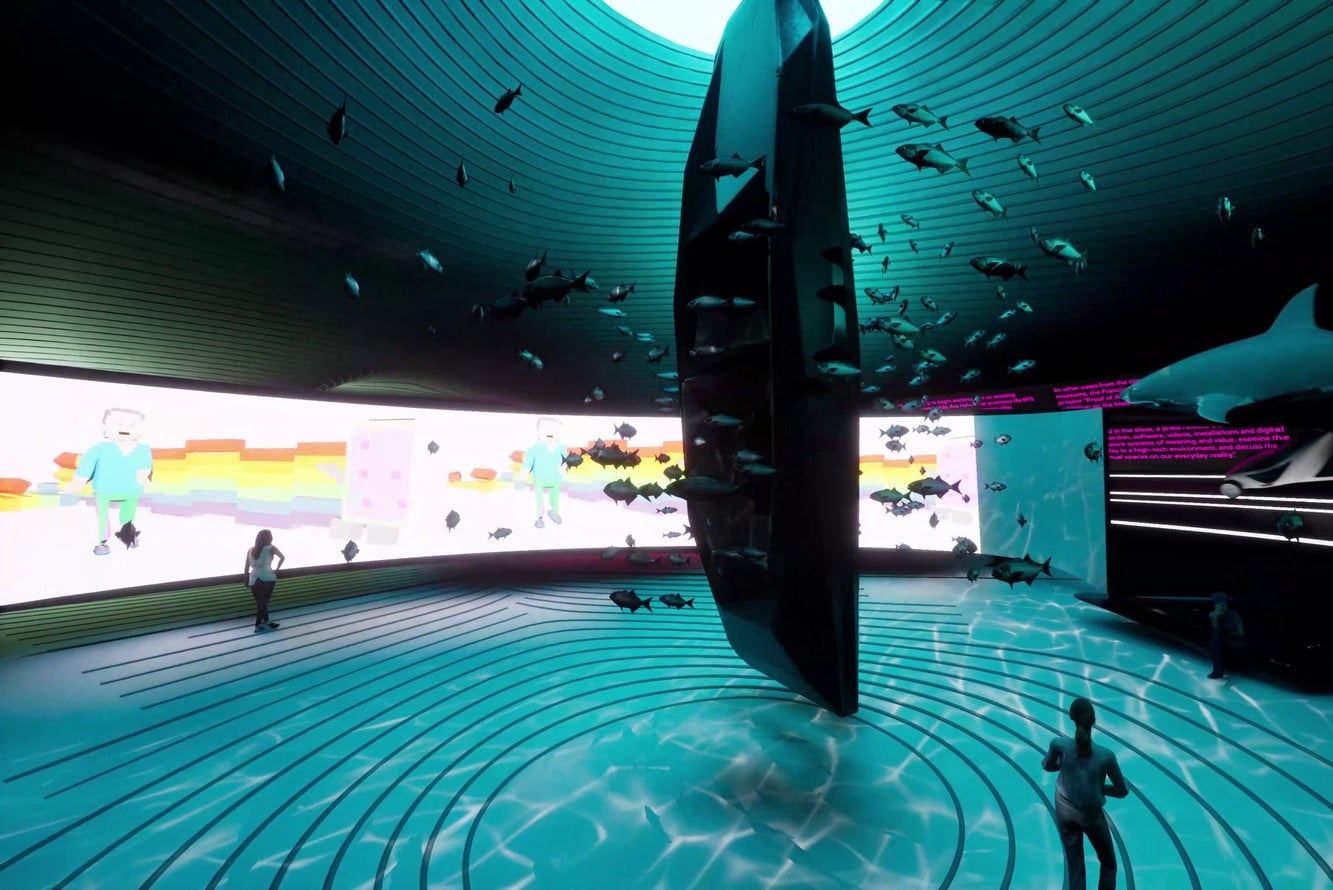The history of architecture, understood as the art of design and construction, has since ancient times been linked to the physical plane of reality. To paraphrase the Pritzker Prize winner Rem Koolhaas, if we represented architecture as a human figure, we would obtain a divided body in which one of its parts would encompass a primitive world from more than three thousand years ago and the other a world from this century. And at this intermediate point, between the past and the future, between memory and projection, is where architecture is located. But what would happen if we turned our gaze to a future in which we, the architects, designed outside the physical plane?
We’ve been talking about the digitisation of our industry for a long time. Current technology allows us to shape our projects before they are built, studying every detail and showing our clients what their future buildings will look like. But now, a new path is opening up that places the architect before a new paradigm as creators of digital content, where virtual and augmented reality give rise to an extended reality that is represented through pseudo-worlds in which users ‘live’ and interact with others. Welcome to the metaverse.
What is the metaverse?
It is definitely the most influential concept on the tech scene and will possibly end up becoming this year’s buzzword. Since Mark Zuckerberg announced his new commitment to virtual worlds at an online event, where he also announced the rebranding of Facebook as Meta, it has become one of the most controversial issues of the moment, being addressed by a huge number of celebrities and specialised media outlets.
However, no one can give an exact (and ultimate) definition of what the metaverse is. In the theoretical field, the concept was coined in Neal Stephenson’s science fiction novel Snow Crash (1992). In it, the author offers his vision of what the evolution of the digital world will be like, describing a dystopian virtual environment to which people resort in order to escape from reality. This premise, which we’ve also seen portrayed on the big screen in films such as Matrix and Ready Player One, is the main goal of major technological companies such as Meta (formerly Facebook) or o Nvidia and which they have christened as the next huge digital revolution.
YWhat’s more, any aspect that we can imagine in our ideology is potentially buildable in this metaverse, from virtual cities where we can live with other users to digital economies. In short, it’s an extension of our life that gives us the possibility to experience ‘real’ sensations in a digital multiverse. And all this is thanks to an extended and enhanced reality through the use of virtual and augmented reality devices such as haptic gloves, essence dispensers, high-definition visors, etc.
The role of architecture in the metaverse: the rise of digital assets
Although it seems that we’re looking at a totally new concept, the truth is that the metaverse has been with us for much longer than we think. For example, open-world games, popularly called sandbox games, are sort of a precursor to the metaverse, where the online, social and economic components that they have been acquiring over the last few years help us get a (somewhat far-off) idea of what this kind of digital universes holds for us.
Many architectural studios have been supporting video game development teams for years in the design of their levels. And today, professional studios such as Nouvel, Piano or Foster have joined this new architectural variant to create the cities of the metaverse. In a statement, Zuckerberg said that “architects will be the new influencers of the virtual world. We need architecture to raise our digital world and we will spare no effort, resources or money”.
Architecture as a creator of digital content in the metaverse
The metaverse, understood as a digital world in which any aspect of our ideology is buildable, calls for massive and constant content to entertain and retain users. The greater the number, the greater the interest of external stakeholders in investing in it and making it a reality. In fact, luxury companies such as Balenciaga closed their brick-and-mortar stores and chose to reveal and sell their latest collections digitally through NFTs (non-fungible tokens).
In the same way, this digital environment opens up a whole host of possibilities for architecture. A virgin habitat. A utopia without the limitations of the physical plane to create digital assets such as fictional cities, where netizens can engage in social and economic activities. We can even work for major brands that want to open their stores in a metaverse. The possibilities are truly endless and also potentially sellable in different worlds.
The contemporary artist, Krista Kim, registered the first sale of crypto property in the world at the beginning of 2021, delivering the design of her digital home, dubbed ‘Mars House’, for almost half a million euros. Kim projects her Mars House as a sculpture of light that evokes a zen-like and restorative atmosphere, which is enhanced by a musical composition devised by Jeff Schroeder, guitarist with the well-known band The Smashing Pumpkins. In one of her most recent appearances, the artist said that soon ”we will live in an augmented reality lifestyle and that NFTs will play a key role in its development“.
The metaverse is, therefore, an idea that architecture studios must explore in their business models, as not only will they be able to sell their designs in these digital worlds, but they will also help us improve sales processes. What’s more, it will help us better convey proposals to our clients, leaving the physical mock-up to one side, to digitally immerse ourselves in one and enjoy a real-time experience of walking around its rooms, its corridors, its gardens, and so on. The client will understand what the user is going to feel when they step into the building, how the sun is going to affect the façades in summer, or what the fragrance given off by plants in a residential development will be as they walk through it.
Following this trend in digital world design, ONE Sotheby’s International Realty and Voxel Architects, along with general contractor and NFT collector Gabe Sierra, have developed the first ever ‘MetaReal’ mansion. Or in other words, a pack that includes the house in the real world and its virtual replica in the metaverse. In an interview with Forbes, Sierra explained that “the metaverse counterpart of the home will serve as an extension of the real-world home, allowing the buyer to host in-home meetings, events and parties with guests from around the world […]. By mimicking the real-world environment of the buyer, we are creating an experience that blends the lines between metaverse and reality”.
What if instead of providing individual services, we, the architects, were to reinvent our own business model to provide scalability that can benefit not just a user, but an infinite number of them, in multiple scenarios and with diverse experiences? Given the movement of leading architectural firms such as Foster & Partners, it seems that our market is heading that way, making it increasingly clear that 2022 is going to be a key year for the metaverse and, more specifically, for the real estate metaverse, where we’ll be in charge of making it reality.
The digital evolution of architecture
The cities of the future will not just be made of concrete and steel. Instead, many of them will build their foundations through ideas and will be located in digital environments. Lots of people claim that this is the beginning of a new digital revolution, much greater than the one experienced with the World Wide Web. There are already companies focused on these worlds, trading with NFTs and supporting ‘small’ alternative realities in which they can offer and manage digital assets, construction and wealth.
“The best virtual properties will be revalued faster than real-world properties”. Janine Yorio, CEO of Republic Realm, a leading company in the metaverse and NFTs.
However, the huge enthusiasm seen by these platforms has led to certain events that will have triggered many alarms. For example, artists have found in the metaverse and in NFTs the ideal place to market their works without having to resort to intermediaries or physical exhibitions. This has given them new opportunities for growth, but it has also given rise to a game of speculation where no one wants to be left out. For example, the digital artist Beepie managed to sell an art collage for around seventy million dollars, making it one of the most expensive works ever auctioned.
These potential dangers mean that the metaverse, understood as a social, industrial and technological revolution, needs a legal and deontological study that establishes a backbone that guarantees best practices and protection to users and companies in any area or situation.
Meanwhile, architects have found in the metaverse a unique platform on which to showcase our ideas. The true digitisation of our industry directly involves the creation of these digital worlds. We are and we need to define the new values of the architecture in this digital era that we are clearly being called to design.
About the author
Claudia Conejero
 Graduate in Architecture from the University of Alicante in 2020 and MA in Video Game Design from Florida Universitaria, Valencia. She has international academic experience at KEA – Copenhague School of Design and Technology and at CHITKARA UNIVERSITY in Chandigarh, India. Since 2019, she has been part of the ADORAS atelier architecture team, working as an architect and project manager.
Graduate in Architecture from the University of Alicante in 2020 and MA in Video Game Design from Florida Universitaria, Valencia. She has international academic experience at KEA – Copenhague School of Design and Technology and at CHITKARA UNIVERSITY in Chandigarh, India. Since 2019, she has been part of the ADORAS atelier architecture team, working as an architect and project manager.









